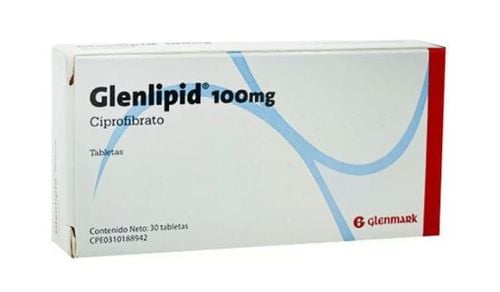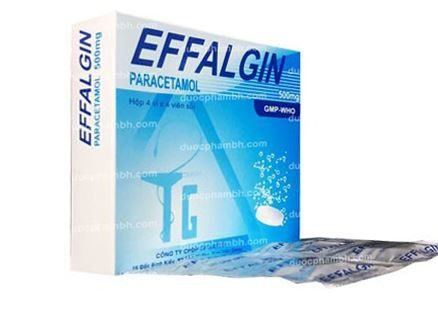This is an automatically translated article.
Toxaxine is usually prescribed by doctors mainly by injection or intravenous infusion for cases of abnormal bleeding due to increased fibrinolysis. For the best treatment, patients need to strictly follow the doctor's instructions on how to use as well as the dose.1. What is Toxaxine?
Toxaxine belongs to the group of drugs that act on blood, manufactured by Daihan Pharm Co., Ltd - Korea. Toxaxine is highly appreciated by doctors for its ability to effectively treat abnormal bleeding conditions related to increased local/systemic fibrinolysis.Toxaxine is prepared in the form of a solution for injection with the packaging of 10 ampoules of 5ml. Each tube of Toxaxine solution contains the main active ingredients, including:
Main active ingredient: Tranexamic acid 500mg. Other excipients just 5ml: Distilled water for injection, HCL and NaOH .
2. What is the use of Toxaxine?
2.1. Uses of Toxaxin
In the human body, blood clots are formed by the protein Fibrin and play an important role in stopping bleeding. When the fibrin is broken down by enzymes, it prevents the formation of blood clots at the site of bleeding, which leads to fibrinolysis. The main active ingredient in Toxaxine is Tranexamic acid, which has anti-hemorrhagic effects based on the mechanism of blocking the fibrinolytic properties of Plasmin, thereby reducing bleeding due to systemic fibrinolysis. When taken into the body through injection, active ingredient Tranexamic acid inhibits the breakdown of Fibrin, forming a complex to replace Plasminogen from Fibrin. Thanks to this mechanism, Tranexamic acid is able to support the natural clotting process and provide effective hemostasis.In addition, Tranexamic acid also has high anti-allergic and anti-inflammatory activity, helping to prevent Plasmin from forming active peptides and kinins - substances that cause inflammatory and allergic lesions. Some studies also show that Tranexamic acid is effective in reducing edema and vascular permeability caused by inflammatory triggers such as Bradykinin and Carrageenan.
When administered intravenously, active substance Tranexamic acid is rapidly absorbed and reaches peak concentrations within 30 minutes, then declines after 6 hours. The half-life of Tranexamic acid averages about 2 hours and the drug is evenly distributed throughout the body tissues as well as the cerebrospinal fluid. It is estimated that approximately 90% of an administered dose of Tranexamic acid is excreted in the urine during the first 24 hours.
2.2. Indications for the use of Toxaxin
Toxaxine is often recommended by specialists for the following cases:Treatment of bleeding conditions associated with systemic fibrinolysis: Aplastic anemia, cancer, leukemia, rash bleeding, abnormal bleeding during or after surgery. Treatment of abnormal bleeding due to local hyperfibrinolysis: Genital bleeding, bleeding in the lungs, bleeding in the kidney, bleeding from the nose, abnormal bleeding during or after edema surgery. prostate gland. Treatment of bleeding from ENT surgery, such as tooth extraction, tonsillectomy, or glandectomy. Treatment of bleeding from abdominal, thoracic, or other major surgical interventions (eg, cardiovascular surgery). Treatment of surgical bleeding in obstetric and gynecological related disorders. Assist in the management of bleeding associated with the use of fibrinolytics.
2.3. Contraindications to the use of Toxaxin
Do not use Toxaxine for the following cases without the prescription of a qualified doctor, including:Patients with a history of allergy or hypersensitivity reaction to Tranexamic acid or any other excipients contained in the drug. Toxaxine is contraindicated in patients with thrombosis or at risk of thrombosis, such as myocardial infarction, cerebral thrombosis, thrombophlebitis,... Do not use Toxaxine for diseases Patients with acute arterial condition or thrombolysis following consumptive coagulopathy, except in cases where the fibrinolytic system is activated primarily with acute major bleeding. Toxaxine is contraindicated in patients undergoing coagulation therapy in combination with Heparin. Toxaxine should not be used in patients with a history of seizures or severe renal impairment.
3. Dosage and instructions for proper use of Toxaxine
3.1. Dosage of Toxaxin
The dose of Toxaxine will be determined by the doctor based on the assessment of the age and bleeding status of each patient, specifically:Toxaxine dose for adults: The standard treatment dose for fibrinolysis Locally: Intravenous 0.5g (equivalent to 1 ampoule of 5ml) - 1g (equivalent to 1 ampoule of 10ml/2 tubes of 5ml) Toxaxine. The injection rate should be slow, about 1ml/min and the drug should be used 2-3 times/day. Standard dose for general fibrinolysis: Intravenous 1g of Toxaxine at a slow rate of about 1ml/min every 6-8 hours, equivalent to 15mg/kg body weight. Toxaxine dose for patients with renal impairment: The specific dose of Toxaxine injection for this patient population will be based on the degree of renal impairment and creatinine clearance. Toxaxine dose for children > 1 year: Intravenous 10mg/kg/day, divided into 2 times/day.
3.2. Instructions for proper and effective use of Toxaxine
Toxaxine is not recommended for use by intramuscular injection, but mainly by injection or intravenous infusion, specifically:Intravenous use: Toxaxine will be injected slowly within 3-7 minutes, avoiding injection with fast speed because it is easy to cause shock phenomenon. Intravenous infusion: Before infusion, it is necessary to dilute Toxaxine in the infusion solution, then infuse the drug at a slow rate over 30-60 minutes. Before administering the infusion to the patient, it should be noted that the infusion has been degassed in order to minimize the danger of infusion of air bubbles.
3.3. How to handle an overdose of Toxaxine?
Toxaxine when used in excess of the prescribed dose can cause symptoms such as headache, dizziness, convulsions or low blood pressure. Seizures are more likely to occur with increased doses of Toxaxine. When you notice an abnormality after an overdose of Toxaxine by intravenous injection/infusion, the patient should immediately notify the doctor for appropriate treatment.3.4. What are the possible side effects when using Toxaxine?
During treatment with Toxaxine, patients may experience some unwanted side effects below:Common side effects: Nausea, anorexia, diarrhea, vomiting, heartburn, drowsiness or headache. Rare side effects: Itching, skin rash, swelling of the mouth/throat/face (hypersensitivity reaction), changes in color discrimination, or shock. If any symptoms related to the use of Toxaxine occur, the patient should stop using the drug and promptly contact a specialist for a timely solution.
4. Things to keep in mind while taking Toxaxine
4.1. What precautions should be taken while using Toxaxin?
In order to treat bleeding with Toxaxine safely and effectively, patients need to be cautious of the following:Active ingredient Tranexamic acid should be administered intravenously at a slow rate, rapid injection may lead to some adverse effects, such as hypotension, palpitations, nausea or chest discomfort,... Caution should be exercised when deciding to administer Toxaxine to patients with severe renal impairment, pregnant women or nursing mothers. Toxaxine should be used with caution in elderly patients due to significant decline in physiological function. To ensure safety and sterility when using Toxaxine by injection / intravenous infusion, patients should avoid using drugs that have been degraded or expired. Toxaxine can cause side effects such as drowsiness or fatigue, so people who often have to operate machinery or drive vehicles need to be careful when taking it.
4.2. Does Toxaxine interact with other drugs?
Toxaxine may have an interaction reaction when used at the same time as the following drugs:Oral estrogen-containing birth control pills. Hemostatic preparations. Enzymes help to clot blood. To avoid drug interactions, patients should inform their doctor about all other medications they are currently taking. The doctor will help the patient assess the risks of interactions and provide the right management.
Please dial HOTLINE for more information or register for an appointment HERE. Download MyVinmec app to make appointments faster and to manage your bookings easily.













